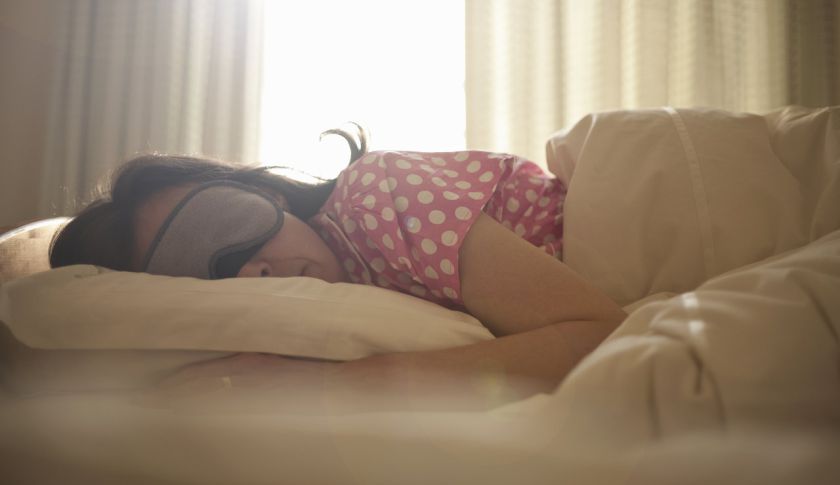(单词翻译:单击)
In Google’s sci-fi future, your alarm clock’s volume will adjust automatically based on how deeply you’re sleeping – as tracked by your watch and pajamas. Apple’s vision of what’s next is a phone app that remembers – without being asked – where you parked your car.
谷歌和苹果又分别迈入下一个极具科幻色彩的高科技领域。如果谷歌的研究取得了成功,你的闹钟将会根据你的睡眠深浅程度自动调整音量,你的手表和睡衣会负责跟踪睡眠状态。另一方面,苹果正在研发一款智能手机应用,它可以记住你把爱车停在了哪里,免去了在迷宫似的停车场里四处找车的尴尬。
On Tuesday, both companies were granted patents for their respective ideas. Legal marketplace SmartUp first spotted the filings with the U.S. Patent and Trademark office.
4月底,这两家公司的相关创意都获批了专利。法律顾问公司SmartUp率先发现了苹果和谷歌递交给美国专利与商标局的文件。

Google’s patent coincides with the rise of activity trackers and smartwatches that already track the sleeping patterns of people wearing them. According to the filing, the patent is for a wearable device, like a wristband or clothing with sensors stitched in, that help adjust alarm clock settings based on the user’s “sleep state.” The device would use “heart, respiration, or pulse rate, body movements, eye movements, ambient, and the like” to determine whether to dismiss, leave, or reschedule the alarm.
如今,能够监测人们睡眠模式的活动追踪器和智能手表等产品不在少数,谷歌的这项专利也是顺势之举。谷歌的专利文件表明,该专利是一款可以根据用户“睡眠状态”调整闹钟设置的可穿戴设备,类似于一款智能手环或内置有传感器的衣物。它能够根据“心率、呼吸、脉博、身体动作、眼部动作及周边环境”来决定是否保留、取消和重设闹钟。
The idea, originally filed by Google in 2011, isn’t exactly novel. Some of Jawbone’s UP devices and Fitbit’s trackers let users set their wristbands to automatically vibrate when the technology determines the best time based on their sleep cycle. Even some apps, like Sleep as Android for wearable devices that run on Google’s Android Wear operating system offer that functionality.
虽然谷歌最早在2011年就提出了这个理念,但它也不算特别新颖。Jawbone公司的Up设备和Fitbit公司的追踪器,也能让用户设定他们的智能腕带,让它根据用户的睡眠周期,在最佳叫醒时机进行震动。就连某些手机应用(比如谷歌Android Wear平台上的Sleep for Android应用)也能提供这个功能。
With that said, there’s still some skepticism around wearable devices’ claims of accurately tracking sleep patterns. They merely infer that you’re sleeping based on your movements and heart rate. But that isn’t entirely accurate. The tracker I’m currently wearing, for example, reported that I slept for only a couple of hours last night when in fact I slept about six hours.
话虽这样说,仍然有人怀疑可穿戴设备是否真的能准确追踪人们的睡眠模式。它们只是简单地根据你的动作和心率来判断你是否睡着了,但这并非完全精确。比如,我现在正戴着的追踪器就报告称,我昨晚只睡了一两个小时,但事实上我昨晚整整睡了6个小时。
But in any case, it will definitely be interesting to see what Google does now that it’s armed with the patent. Should other activity tracker makers worry?
但不管怎么说,单单是看看谷歌能利用这项专利做些什么,也绝对是件有趣的事情。其它活动追踪器制造商是否感到“压力山大”呢?
Meanwhile, Apple’s patent to help you find your car come after a lengthy approval. The company originally filed its application in 2013, and it first surfaced last year.
与此同时,苹果的自动寻车技术经过冗长的审批流程终于获得了专利。苹果早在2013年就提交了申请,外界还是在去年才第一次知道苹果研制了这种技术。
The patent is for “vehicle location in weak location signal scenarios,” meaning that it would use techniques other than GPS or cell signal to locate the person’s car. Instead, the document describes having the driver’s smartphone automatically detect when the car is parked (the phone is not moving anymore, it’s no longer connected through wires or Bluetooth signal to it, etc.) and remembering the location and time.
该专利又叫“弱信号区域车辆位置识别”。这意味着,它将使用GPS和手机信号以外的技术来定位用户的车辆。苹果的专利文件称,该技术能通过驾驶员的智能手机自动探测车辆何时停泊(当手机不再有信号,也不再通过数据线或蓝牙信号与车辆相联的时候),并记录泊车的地点和时间长度。
The application, which includes a diagram of Apple’s headquarters as an example illustration, doesn’t specify the scenarios when the service would be useful. But this method could come in handy in parking structures and underground garages where smartphone signals can often be very weak.
该专利文件还使用了苹果的总部大楼地图作为图示,不过它并没有透露这项服务何时能够启用。但这种技术迟早是用得上的,特别是在手机信号往往很弱的地下停车场。
But as always, it’s entirely up to the company to actually turn a patent into a real product or actually enforce it against other companies. Keeping track of your car could remain your own responsibility, unfortunately.
但一如往常,苹果和谷歌何时能把这些专利变成看得见摸得着的产品,或是强制其他厂商执行这些专利,还得看它们自己的意愿。在短期内,在停车场停好车后,你还是得自己记牢爱车的位置。


